SECONDARY EDUCATION
M.Burgos M.C.Muñoz-Delgado



Common: School assignments; Field work.
Historical: Managing temporal information; The historical biography; Comparisons in history; Analysing works of art (I). Architecture; Analysing works of art (II). Painting; Analysing works of art (III). Sculpture; Comparing artworks and artistic styles.
1. The Middle Ages. Stages and civilisations
2. The Byzantine Empire (I). General characteristics
3. The Byzantine Empire (II). Society and art
4. The Germanic kingdoms. The Franks and the Carolingian Empire
5. Islam (I). The birth of civilisation
6. islam (II). THE expansion
7. El islam (III). The economy
8. islam (IV). Society and the city
9. islam (V). The artistic legacy
Apply, reflect and test your skills
28
7. Art in the 9th and 10th centuries. The Camino de Santiago
8. Spanish Romanesque art
9. Madrid and Islam
Apply, reflect and test your skills
Protagonists: Ende and Carla Fuentes
1. The European territory. A mosaic of kingdoms and nations
2. Agricultural progress
3. Medieval cities (I). Recovery, functions and spaces
4. Medieval cities (II). Government and economy
5. Society and everyday life
6. Cultural and religious renewal
7. Gothic Art (I). Architecture
98
Protagonists: Rufaida al-Aslamia and Loujain Alhathloul
1. Feudalism in Europe
2. Feudal economy
3. Feudal society
4. How nobles lived
5. How clerics lived
6. How peasants lived
7. Romanesque Art (I). Architecture
8. Romanesque Art (II). Sculpture and painting
Apply, reflect and test your skills
50
8. Gothic Art (II). Sculpture, painting and stained glass
9. The Late Middle Ages in Europe
Apply, reflect and test your skills
Protagonists: Hildegarda de Bingen and Margarethe von Trotta
1. The political and territorial decline of al-Andalus
120
2. The Late Middle Ages in al-Andalus.The Nasrid Kingdom
3. Consolidation and advance of the Christian kingdoms
4. Government and administration of the Christian kingdoms
5. The repopulation of the conquered territory
6. Economic activities of the Christian kingdoms
7. Estate-based society and ways of life
8. The culture and art of the Christian kingdoms
9. The Late Middle Ages in the Christian kingdoms
10. Madrid between the 11th and 13th centuries
11. Madrid between the 14th and 15th centuries
Apply, reflect and test your skills
Protagonists: Gudrid Thorbjarnardóttir and Ann Bancroft
1. Al-Andalus. Islam in the Iberian Peninsula
70
2. The political and economic organisation of al-Andalus
3. Society and everyday life
Graphic report. The culture of water
4. Culture and art in the Caliphate
5. Christian resistance groups (722-1035)
6. Organisation of the resistance groups
1. The Modern Age
2. The discoveries (I). Causes of a process
3. The discoveries (II). Voyages
150
4. The birth of the Modern State
5. Economic transformations and social changes
6. Religious change and conflict. Reformation and Counter-Reformation
7. Humanism. The new vision of the human being
8. The Renaissance in Italy (I). Architecture
9. The Renaissance in Italy (II). Sculpture and painting
10. The Renaissance outside Italy
Apply, reflect and test your skills
Protagonists: Luisa de Medrano and Premio Luisa de Medrano
1. The reign of the Catholic Monarchs
2. The Hispanic monarchy
3. The politics of the Habsburgs
4. The Conquest of America
5. Colonisation and organisation of America
174
5. Migratory movements (I). Internal migration
6. Migratory movements (II). International migration
Graphic report. Women and international migration
7. The consequences of migration
8. The future of the world’s population
Apply, reflect and test your skills
Protagonists: Aletta Jacobs and Afrikable: A Spanish NGO dedicated to women in Kenya
1. Population distribution in Europe and Spain
2. Natural population movements in Europe and in Spain
3. Migratory movements in Europe
4. Migratory movements in Spain
5. Population growth in Europe and in Spain
6. The composition or structure of the population
Graphic report. Population policies
7. The population of the Community of Madrid
Apply, reflect and test your skills
Graphic report. Encomienda, indigenous rights and interpretations of Spain’s work in the Americas
6. Economy, society and everyday life
7. The Golden Age (I). Culture and architecture
8. The Golden Age (II). Sculpture and painting
9. The Early Modern Age in the Community of Madrid
10. Economy, society and culture in 16th century Madrid
Apply, reflect and test your skills
Protagonists: Catalina de Bustamante and «Yo mujer, tú cómplice, ellas luchadoras»
1. The 17th century. Transformations and conflicts
2. Political regimes
3. European population and economy
4. The Hispanic monarchy in the 17th century
5. Society and daily life in Europe and Spain
6. Science and culture
7. The artistic legacy. The Baroque
8. Baroque in Europe
9. Baroque in Spain and America
Graphic report. Velázquez’s genius
10. Baroque in the Community of Madrid
Apply, reflect and test your skills
Protagonists: Josefa de Óbidos and Pepa
1. Spatial distribution of the world’s population
2. Natural population movement
3. The rate of natural
4.
252
200
Protagonists: Sofonisba Anguissola and M.I.A. (Maya Arulpragasam)
1. Cities and urbanisation
2. Large urban areas in the world today
3. Urban morphology
Graphic report. Urban structures in the world
4. The global urban hierarchy
5. Contemporary issues affecting cities
6. Cities as ecosystems
Apply, reflect and test your skills
Protagonists: Marion Mahony and The city of women
1. Rural and urban settlements
2. The urbanisation process (I). The pre-industrial period
3. The urbanisation process (II). The modern and contemporary period
4. Characteristics of the urban population. Types of cities
5. Structure of a city (I). The city centre
6. Structure of a city (II). The city outskirts
7. Urban hierarchy
8. Cities in the Community of Madrid
Apply, reflect and test your skills
Protagonists: Diana Balmori and Btoy
272
290
310
230
1 Read the text and answer the questions: a) What is the name of the capital of the empire where Kassia lived?; b) Which emperor divided the Roman Empire into two?; c) Which culture became more influential in the Byzantine Empire?
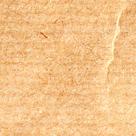
2 What are icons?
I was born at the beginning of the 9th century and I live in the capital of the Byzantine empire. My name is Kassia of Constantinople. I am a composer and a poet. Since I was young, I have had access to an education based on the culture of Classical Greece. Thanks to this knowledge, I became a writer and I have created a vast poetic production over the years.
The Byzantine empire began after emperor Theodosius I divided the Roman Empire in the year 395 CE. The Eastern Roman Empire, where I live, gradually abandoned Latin traditions in favour of Greek culture. Between the 8th and 9th century, worshipping icons was prohibited. Icons are sacred images painted on wooden panels on a golden background which

represent Jesus, Virgin Mary or the saints. I defend the worship of icons so I have decided to retire into a monastery. Here, I can continue creating my poems and musical compositions, most of which are religious and dedicated to the Virgin and saints.
For a better understanding of the beginning of the Middle Ages, you are going to learn about:
Para comprender mejor el inicio de la Edad Media, vas a conocer:
• The Early Middle Ages, stages and medieval civilisations.
• The Byzantine Empire. General characteristics, society and art.
• The Germanic kingdoms. The Franks and the Carolingian Empire
• Islam. Birth and expansion.
• Islam. Economy, society and cultural legacy.
1 Look at the map in the unit showing the routes of the Germanic invasions. Make a chart with the names of the different Germanic tribes, their origin and where they settled.
LET’S ACTIVATE WHAT WE ALREADY KNOW
1.1 1.1 As a warm up to introduce the topic, we will play an “alphabet game” or “word roulette” (the Educaplay platform has many possibilities on offer).
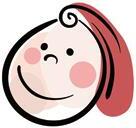
THE EARLY MIDDLE AGES

2 With a partner, talk about the information you gathered. Ask each other questions about the Barbarians' homeland and the location of their kingdoms once the Empire fell. Try to use the modern name of those areas.
Where do the Saxons come from?
They come from modern-day Denmark.
Where are they living in the 5th century?
They are living in Britain.
2.1 Estudiamos sus diferentes etapas, el Imperio Bizantino, los pueblos germanos, el Reino Visigodo, y el nacimiento del Imperio Carolingio.
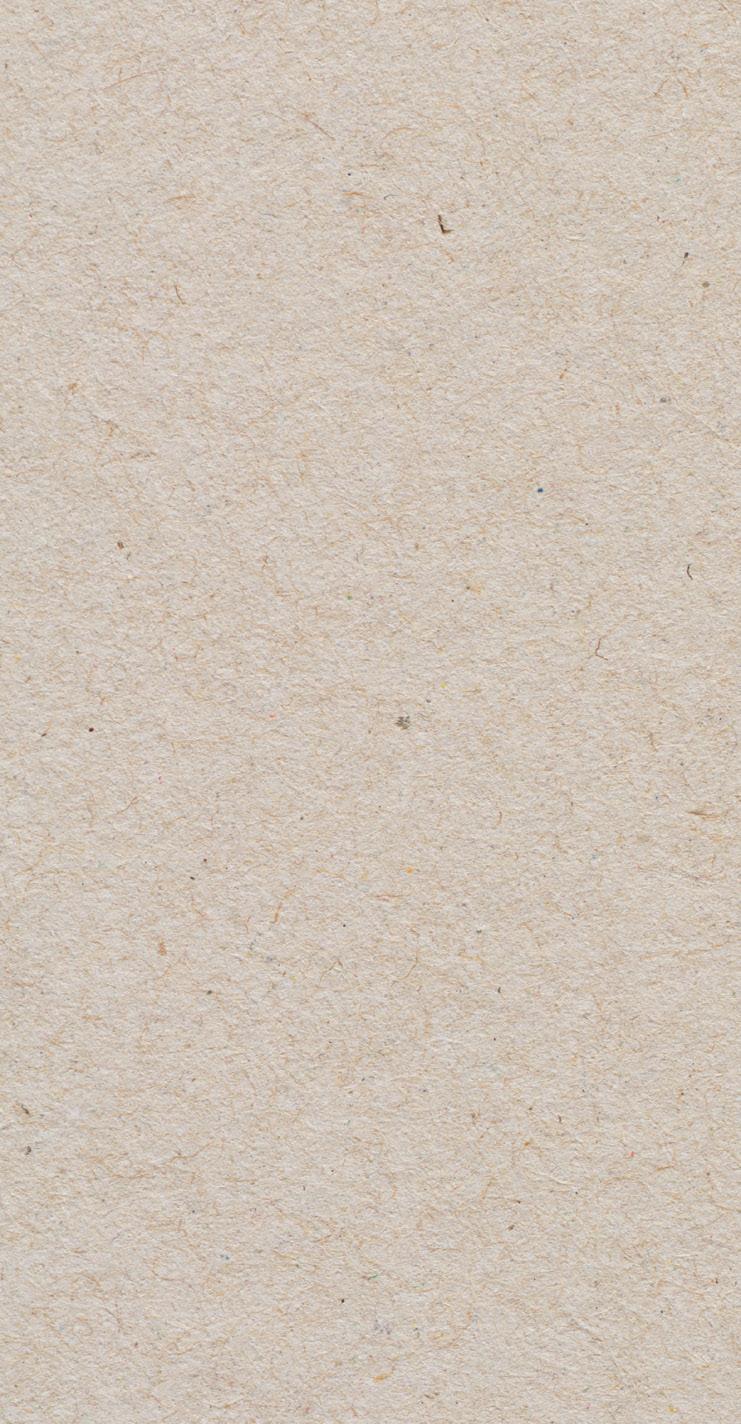

THE BIRTH OF ISLAM
3.1 3.1 We will learn about key characteristics, territorial expansion, economy, society, daily life and cultural and artistic heritage.


KEY WOMEN
4.1 4.1 Working in pairs, we will research key women from the study period, select one and do a class presentation and a small mural.
4.2 4.2 We will present the biographies we have created.

3 Some areas were particularly complicated to defend as they suffered from constant attacks, so the Romans built defensive walls to protect them and prevent the Barbarians from entering the territory of the empire. Do some research and write an entry in the journal of the general in charge of one of those bases, explaining your daily routine and how things are changing now the empire is being divided by Theodosius.
+ for guidelines, go to anayaeducacion.es

In the 3rd century, Germanic tribes, that until then had remained on the other side of the borders of the Rhine and Danube rivers, began infiltrating the Roman Empire. In order to better defend the Roman Empire, in 395 Emperor Theodosius divided it into two parts: the Western Roman Empire, with its capital in Rome, and the Eastern Roman Empire, with its capital in Constantinople.
From then on, each part followed a different historical path.
• The Western Roman Empire endured invasions from a series of Germanic tribes, such as the Visigoths, the Suevi, the Vandals and the Alans. Finally, in 476, it fell into the hands of the Germanic tribe called the Heruli and disappeared. Its territory fragmented into different Germanic kingdoms.


• The Eastern Roman Empire, however, managed to survive the fall of Rome and the Germanic invasions. Historians refer to it as the Byzantine Empire, and it lasted until 1453, the year in which the Turks conquered its capital, Constantinople.
The dates 476 and 1453 have been considered by many historians as the defining dates of the Middle Ages, although others consider its end to be the discovery of America in 1492. This extensive historical period is usually subdivided into three great stages of varying duration: the Early Middle Ages, which

Theodosius I the Great (346-395 BCE). Born in Italica (Hispania), he was the last

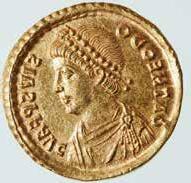
encompass: encompassing something means to include it.
During the Middle Ages, three civilisations coexisted and contended with one another in the territory of the old Roman Empire: the Byzantine Empire, Latin Christendom and Islam.

• At first, the Byzantine Empire in the East maintained the Roman traditions, but in time it ended up adopting the Greek language and culture. It is also called Orthodox Christianity as it does not recognise the religious primacy of the Pope of Rome.
• Latin Christendom in the West brought together the kingdoms established in the old Western Roman Empire, such as the Visigoths and the Franks. These tribes adopted the Roman Catholic Christian religion, which recognised the authority of the Pope, and the feudal system, which is why they are also called feudal monarchies.
• Islam was a new religion that arose from the preaching of Mohammed in the 6th century. Beginning in the 7th century, its adherents, called Muslims, conquered part of the territories of the Byzantine Empire and the old Western Roman Empire. With this they created a new civilisation between the East and the West that broke the Christian bloc on both shores of the Mediterranean.
many centuries is this?
2 Put these events in chronological order:
a) the conquest of Constantinople by the Turks;
b) the division of the Roman Empire;
c) the discovery of America;
d) the beginning of Islam;
e) the end of the Western Roman Empire.
3 Compare the maps and answer these questions:
a) What territorial changes can we see in the West?
b) Which are the main Germanic kingdoms and where are they located?
c) What territorial changes have taken place in the East?
4 Look for the information and write down the answer:
a) When and why did the Middle Ages receive its name?
b) How do Catholic and Orthodox Christianity differ?
• The administration was organised into provinces governed by a political and military head. The cavalry and the navy played a fundamental role.
• Agriculture was the basis of the Byzantine economy. Most of the land was in latifundia, which were large estates that belonged to the nobility and the monasteries, and were farmed by serfs.
• Craftspeople made luxury articles, such as silk fabrics, carpets, jewellery, ivories and enamels
• Commerce benefitted from the strategic position of Constantinople, located between Europe and Asia, and the Mediterranean and Black Seas. Silk from China; spices, ivory and pearls from India; and amber, skins and wheat from the north of Europe all found their way to Byzantium.
In the 6th century, Justinian tried to restore the Roman Empire. With this aim, he conquered the Vandal Kingdom of North Africa, and he took Italy from the Ostrogoths and settled in the southern Iberian Peninsula.
By the middle of the 7th century, the Muslim conquests had reduced Byzantine territory to the Balkan Peninsula, Asia Minor, Sicily and some coastal territories of the Italian Peninsula.
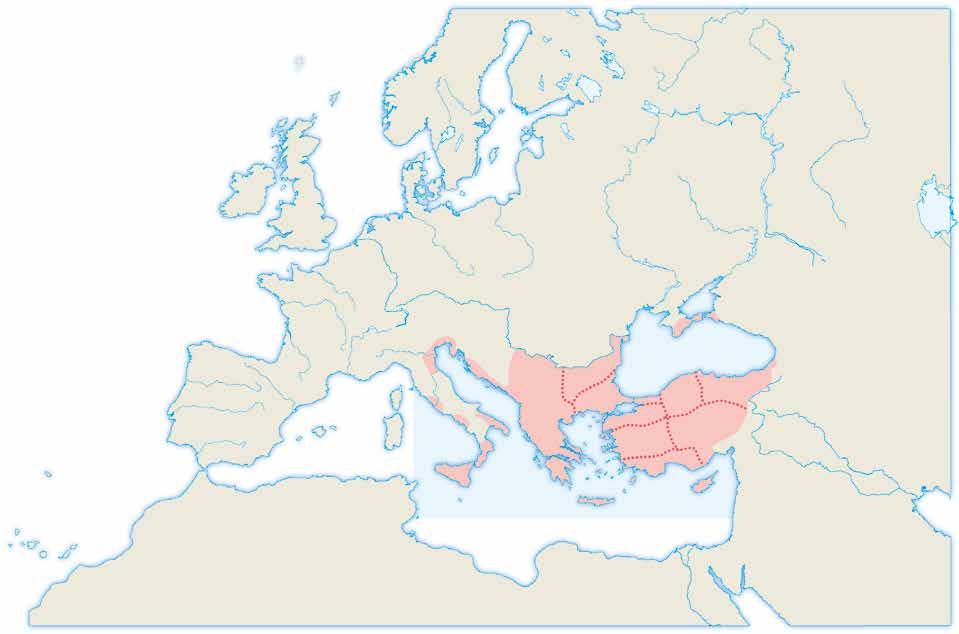

1 Explain these terms briefly: Basileus, Corpus Iuris Civilis, enamels, spices, amber. Check the glossary at the end before starting.
2 Study the maps above to answer the following questions:
a) What territories did Justinian conquer?
b) What was the objective of these conquests?
c) What do the arrows that appear on the map indicate?
d) Which territories did Byzantium lose in the 7 th century and who conquered them?

Given its position, Constantinople dominated the routes that joined Europe and Asia, and therefore, it was a privileged place for commerce (1). And the Golden Horn was a great natural port (2)
The emperors established their court in Constantinople, formerly Byzantium. The city, protected by a triple wall, housed the palace of the emperor, the senate and the court of justice, and had broad commercial streets, spaces for public life, such as the forum and the hippodrome, and notable cultural and religious buildings, such as the university and the Hagia Sophia church.


3 Using the explanatory text and pictures, answer these questions:
a) Why was the location of Constantinople favourable for commerce?
b) Which countries did it trade with, and what products?
c) What was the city of Constantinople like?
Byzantine society was organised into three levels. The upper class consisted of the aristocracy and high-ranking Church officials who held large latifundia and occupied notable positions in the government and the administration.
The rest of the clergy, civil servants, wealthy businessmen and free farmers made up the middle class, while serfs and slaves made up the lower class.
The Church exerted a great influence on Byzantine society. In fact, it was closely tied to political power because it crowned the emperor. It held large estates and it controlled spiritual aspects of a society in which religious disputes tended to be mixed with social ones. Nevertheless, it faced two serious problems:
• The Iconoclastic Controversy began when some emperors prohibited the worship of sacred images, or icons, looking to reduce the power of the monasteries and to take control of their assets. The prohibition unleashed* serious social conflicts between the 8th and 9th centuries, although in the end the worship of icons prevailed.
• The East-West Schism was caused by rivalry between the patriarch of Constantinople and the Pope of Rome for primacy over Christendom. It ended in 1054 with the separation, or schism, between the Western or Roman Church and the Eastern Church. The latter, which came to be called the Orthodox Church, extended its area of influence to Eastern Europe with the evangelisation of the Slavic tribes.
• Byzantine architecture used poor materials, such as brick; columns for support; semi-circular arches; and flat or vaulted planes, especially pendentives. The main building was the church, which adopted a rectangular, square, octagonal or Greek cross plan. The most outstanding examples are the Hagia Sophia basilica in Constantinople, commissioned by Justinian, and the Basilica of San Vitale in Ravenna, both from the 6th century.
• Mosaics decorated the walls and domes of the interior of the churches. Among the most famous are those of San Vitale in Ravenna, which represent the emperor Justinian and his wife Theodora with their retinue, taking offerings to the church.
• Icons were religious images. The majority were painted on boards and incorporated gold in their imagery. Their way of representing religious scenes and images of Jesus Christ, the Virgin and the saints exerted a great influence on later art.
Byzantine sacred images or icons (from the Greek eikon, meaning image) are usually flat, with stylised figures and golden backgrounds, and follow a series of conventions or characteristic norms of representation.

1 Completa el cuadro sobre los problemas de la Iglesia bizantina.
Problemas Causas Resolución Luchas iconoclastas
Cisma de Oriente
Understanding art
2 What were icons? What was their main theme? Do they seem like realistic representations to you?
Answer the questions using three arguments.
3 Find characteristics of Byzantine architecture in the pictures.
4 Explain the system of roofing used in the construction of the Hagia Sophia church.
5 Look for the mosaics of Justinian and Theodora on the Internet and describe them.

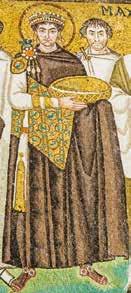

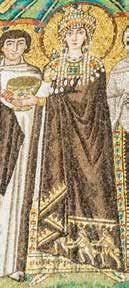

The central nave, which is wider and higher, is covered by an enormous dome on pendentives that support it on four columns. Its weight is offset by two semidomes and two large arches, reinforced on the outside by buttresses. The lower lateral naves have two floors; the upper one is called a gallery.
unleash: if someone or something unleashes a feeling or an activity, it means that they start it.
In the year 481, after crossing the Rhine, the Franks settled in the northern part of the Roman province of Gaul, where Clovis founded the Merovingian dynasty.
In 751, Pepin the Short established the Carolingian dynasty, which experienced its heyday under his son Charlemagne (742-814). He proposed re-establishing the unity of the old Western Roman Empire. With this aim, he conquered the territories of a number of tribes, such as the Lombards in northern Italy, the Bavarians and the Avars in central Europe and the Saxons in northern Germany. After these conquests, Charlemagne was crowned emperor by Pope Leo III on Christmas day in the year 800. However, the empire only lasted until the year 843, because when Charlemagne’s son and successor Louis the Pious died, the empire was divided between his children.


• The emperor governed the Carolingian empire. He defended Christianity and intervened in matters of the Church. The empire was divided administratively into counties, run by a count, and marches, or defensive borderland provinces, run by a marquis.
• The Carolingian economy was based on agrarian activities that were practised on extensive latifundia belonging to the aristocracy and to the Church. Grains were grown, complemented by limited livestock farming and by fruits and hunt obtained from the forests.
• Urban activities declined. Crafts were made on the latifundia, where all necessary items were made (fabrics, tools, etc.). Commerce was limited to luxury goods for the rich and powerful.
• Carolingian society was organised into three groups. The nobles and the high-ranking ecclesiastics occupied the highest social position. They held most of the land and performed the main positions in government and administration. They were followed by the rest of the free people (farmers, craftsmen and merchants). In the last group were serfs, the equivalent of the slaves of antiquity, who were bound to work the land and who could not leave without permission.
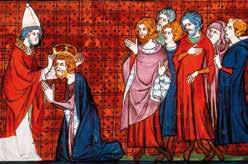
During the reign of Charlemagne, a type of cultural renaissance took place that it had its centre in Aachen, the imperial residence. In this city Charlemagne founded the Palace School, led by Alcuin of York and inspired by Roman models.
Architecture enjoyed some remarkable constructions, such as palaces, churches and monasteries commissioned by Charlemagne in
The imperial palace of Charlemagne in Aachen (1) functioned as a permanent and administrative residence for the empire.
Among its more significant buildings was the Palatine Chapel (2), built between the years 790 and 805 by architect Odo or Eudes of Metz following the model of the Byzantine church of San Vitale in Ravenna. Interior of the Palatine Chapel (3)



1 Explain the events of the years 481, 751, 800, 843.
2 Who were these figures: Clovis, Pepin the Short, Charlemagne, Leo III, Louis the Pious?

the main cities (Ingelheim, Aachen, Nijmegen) as a manifestation of his power. Particularly noteworthy among them are the palace of Aachen, the residence of the emperor that contains a chapel built between the 8th and 9th centuries that still exists today; the Fulda monastery, and the monastery of Saint Gall. Few sculptures have survived, but the sculpture of Charlemagne on horseback is one of the most popular examples. Smaller works made in ivory or metal (reliquaries, chests) are more abundant, as well as miniatures, or small paintings on parchment that illustrated books, such as the Gospels.
3 Look at the maps and write a text with the information that they provide. Answer these questions: What was the objective of the conquests of Charlemagne? Did he achieve his goals?
Assessing works of art
Provocative questions
4 Look at the pictures and write what materials, supports, arches and coverings were used in Carolingian architecture.
The birth of Islam took place in the Arabian Peninsula, a desert territory located in the Near East, between the Red Sea and the Persian Gulf. At the beginning of the 7th century, Arabia was inhabited by several independent tribes, which were at war with one another. The inland tribes were nomadic farmers and the religion they practised was based on religious fetishism The tribes living in coastal areas lived in settlements and worked as farmers or traders and they were polytheists. That was the case in the Hejaz region where many traders and merchants passed through, the main cities being Mecca and Yathrib (Medina).
Two of the common elements shared among all Arabs were the Arabian language and the cult of the Black Stone, a piece of basaltic rock that they worshiped, as well as several other idols in the Kaaba sanctuary in Mecca.
In the 7th century, Muhammad was able to unite the Arabs under a new religion, Islam. Muhammad was born in the year 570 in the city of Mecca to a wealthy family. At the age of six he was orphaned and soon began to work as a merchant for Khadija, a rich widow, whom he married when he was 25 years old.
Having gained the status of a rich and respected merchant, he would often retreat to meditate in a cave in Mount Hira, close to Mecca. There, in the year 610, he had a vision of the archangel Gabriel, who ordered to him to memorise and recite the verses containing the teachings of Allah. From this moment on he began to preach a new religion called Islam, meaning submission to the will of a single god: Allah.
After the death of Muhammad, the Islamic religion was laid out in the Koran, the sacred book of the Muslims. Those who practise this religion are called Muslims, meaning those who submit or believe, and they must fulfil five religious precepts, which are considered to be the pillars of Islam, as well as certain behavioural rules.
• There are five religious precepts: the testament of faith: ‘There is no god but Allah and Muhammad is his prophet’; prayer five times a day facing Mecca, and the communal prayer on Fridays at the mosque; alms for those in need; fasting during the month of Ramadan from sunrise to sunset; and the pilgrimage to Mecca at least once in a lifetime.
• The rules on behaviour permit polygamy and forbid drinking alcohol, eating pork and gambling. Other rules are that the Muslim lifestyle must be governed by principles of equality, tolerance, brotherhood and unity.
1 Look at the map and complete these tasks: a) What were the main geographic territories of pre-Islamic Arabia? b) Locate Yemen, Yathrib and Mecca and indicate in which of the territories above they are located.

2 Explain the meaning of the terms Muslim, Koran and Kaaba.
3 Name the five precepts of the Muslim religion, using these terms: God, prayer, alms, fasting, and pilgrimage.
4 With the help of the text and the drawing of the Kaaba sanctuary, answer these questions: a) How was it built? b) Why is it the most sacred place for Muslims?
c) Where is the Black Stone found?
The Koran, or sacred book, and the Sunnah
The Koran is the sacred book of the Muslims. Its name comes from the arabic word qur’ān, meaning ‘recitation’, because it gathers together all the verses of Allah’s teachings recited by Muhammad.

It is made up of 114 chapters, or suras, divided into ayahs or verses.

The Sunnah, or tradition, is for many Muslims another source of Islam. It is a collection of traditions based on what the prophet said or did regarding diverse matters. Until the 9th century, when it was compiled, it had been passed on orally.
Islam has several holy places. These are the city of Mecca, where the Kaaba sanctuary is located (1); the city of Medina, home of the mosque of the prophet; and the Dome of the Rock (2), located in Jerusalem, built in the place from which, according to tradition, Muhammad rose to the Seventh Heaven.


The Kaaba sanctuary (3) or house of worship is the most sacred place for Muslims. According to the Islamic tradition, it was built by Abraham and his son Ishmael, who were ordered to do so by Allah.

It is presently a stone structure with no windows and a silk cover, and contains texts of the Koran written in gold. The interior walls and floor are made of marble.
On one of the exterior corners is the Black Stone (4) This marks the starting point for the ritual walks that the Muslims make around the sanctuary.
Muhammad began to preach his doctrines in the city of Mecca, where he clashed with the rich merchants. In 622 he had to flee from the city and move to Yathrib, which since then has been called Medina, the city of the prophet. That year, called the year of escape, or hegira, is used as the starting point for the Muslim calendar. After becoming the political and religious leader of Medina, he recruited an army and conquered Mecca in 630. At the time of his death, two years later, almost all of Arabia was Muslim.
After the death of Muhammad in 632, the Muslims, driven by the strength of their faith and a powerful army, formed a great empire during the 7th and 8th centuries. Their expansion grew in three stages:
• The orthodox caliphate (632-661). Muhammad’s successors were chosen by his family and friends, with the title of caliph (successor to God’s messenger), and they lived in Medina. Islam expanded to Syria, Palestine, Egypt, part of North Africa, Mesopotamia and Persia.
• The Umayyad caliphate (661-750). The hereditary succession of the Umayyad family was implemented and the capital city of the caliphate was moved to Damascus. This is when the Muslim empire reached its maximum expansion, extending west to Northern Africa and the Iberian Peninsula, and east to Turkestan and the Indus Valley.
• The Abbasid caliphate (750-1055). After the Umayyads were dethroned by the Abbasid dynasty, the capital city was moved to Baghdad, and after the conquest of Crete and Sicily, Muslim expansion stopped. The Turks conquered the caliphate in 1055, although the Abbasid caliphs remained in place under Turkish control until Baghdad was taken by the Mongolians in 1258.
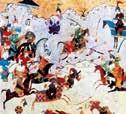
• The government of the empire was in the hands of the caliph. He was considered to be ‘the shadow of God on Earth’, and for this reason he held both religious and political power. As a religious leader, he presided over the communal prayer on Fridays, and as the political leader, he governed, administered justice and directed the army. The caliph had the help of the vizier, or prime minister, who directed the other administration employees.
• The administration of the empire was organised into provinces controlled by a governor, emir or wali. Other positions were the financial superintendent and the judge, or kadi, who administered justice. The inhabitants of the territories paid two types of taxes: one depended on the amount of land they had and the other was personal. The latter ceased when they converted to Islam.
Conquests at the death of Muhammad (632 CE)
Conquests of the Rashidun Caliphate (632-660)
Conquests of the Umayyads (660-750)
Byzantine Empire (during the second half of the 7th century)
around 827
Frankish kingdom (around the year 750)
disputed by the Byzantines and the Muslims
sieges of Constantinople (674-678 and 717-718)
3 Find the following territories and place them in the correct stage of the conquest: Marrakesh, Damascus, Alexandria, Cordoba, and Baghdad. Indicate which countries they are found in today.
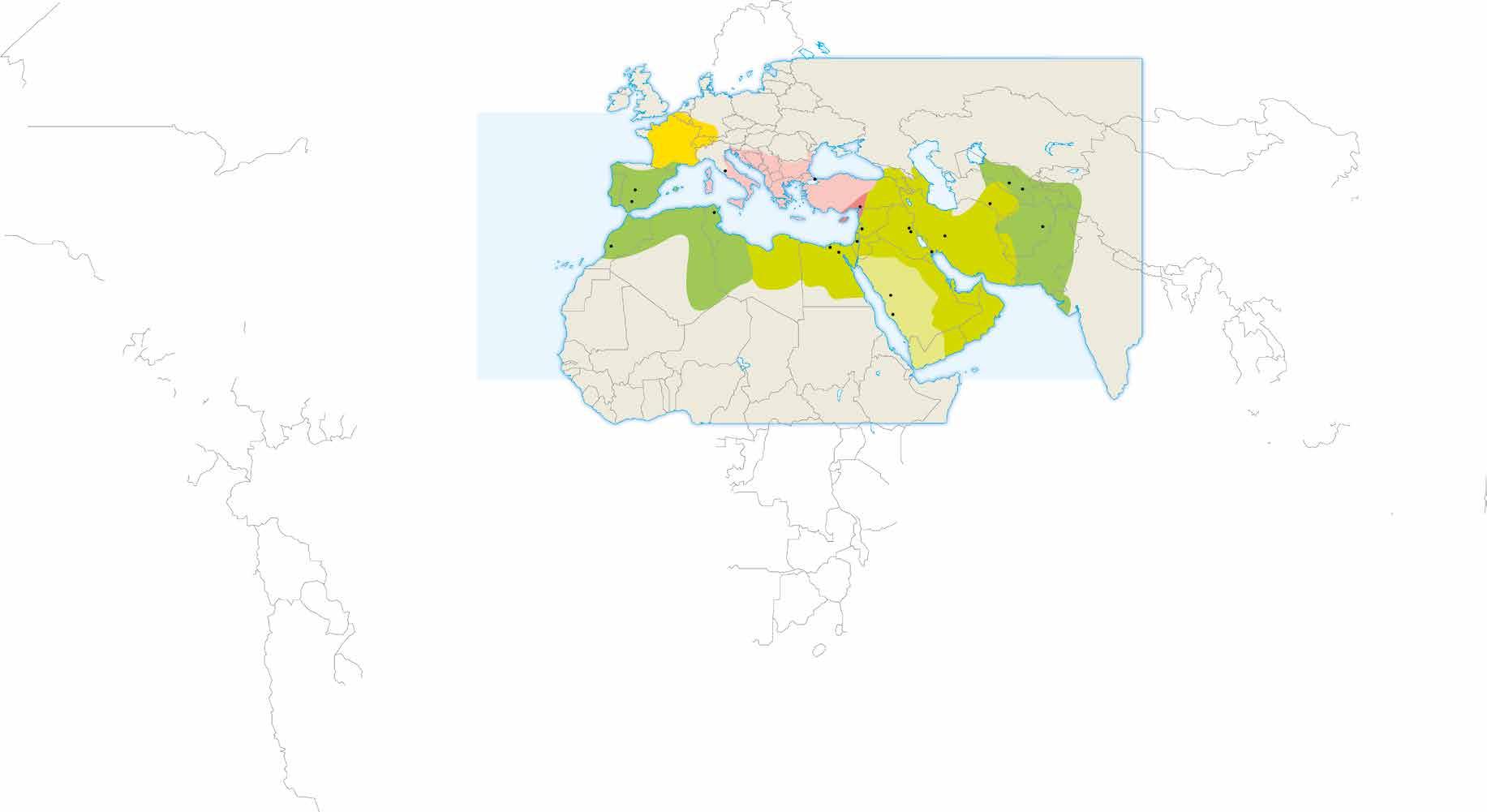
Nomadic farming of camels and sheep continued in desert regions. Nevertheless, as a result of the enormous geographic extension of the empire, agriculture became the foundation of the Muslim economy and employed most of the population.
• The variety of crops was very large. In the irrigated valleys of the East they cultivated durum wheat, rice, cotton, sugar-cane, saffron, mulberry, citruses (bitter orange, lemon, lime) and vegetables (spinach and aubergine). Many of these crops spread to the western part of the Muslim empire.
• The farming techniques also changed. This meant that the irrigation systems improved with the use of waterwheels, used to extract water, the construction of ditches for its distribution, and wells and cisterns for storing it. The slopes of mountains were also farmed using terraces.
• The private property of conquered land generally remained in the hands of its original owners in exchange for taxes. However, the lands belonging to the conquered state were shared between the caliph, who got one fifth of the land, and the Muslim aristocracy.
Other essential economic activities were crafts and trading, generally found in the cities.
• The craftsmen had small workshops where they also sold the items they made. Among these, cotton and linen fabrics; carpets and tapestries; leather goods, ceramics and metal; perfumes and paper.
• Trade benefitted due to the geographic position of the empire between Europe and the East. The products were transported across land using large camel convoys and by sea using sailboats. The trade routes covered great distances across the Mediterranean and the Indian Ocean, through inland Africa, the Far East (China and India) and Northern Europe.
• The goods that were transported along these routes were mainly luxury items, such as metals, hides, silks, fabrics, salt, spices and slaves. For trading, the Muslims used different methods of payment, such as gold coins (the dinar), the bill of exchange and cheques
Pointing out historical contributions
1 ¿Qué novedades agrarias introdujeron los musulmanes en las tierras conquistadas?
¿En qué territorios del imperio predominaron y por dónde se extendieron?
Working with concepts
2 Look up the terms dinar, bill of exchange and cheques and explain what they have in common and the differences between them.
3 Look at the map and answer:
a) Where did gold, silver, silk, amber, spices, salt, slaves, porcelain and ivory come from?
b) Explain who the clients for the previously mentioned items would be.
c) Group the trade products that appear in the key to the map into these five categories: metals, fabrics, condiments, slaves, luxury items.
4 What means did the Muslims use to transport their goods? Search for images about these means of transport on the Internet.
5 Make a diagram or a mind map about the economic activities of the Muslims.
Water shortage in a large part of the empire’s territories forced the Muslims to develop irrigation techniques.
Water was extracted using waterwheels (1), which were wheels moved by water currents or animals, that were partially submerged and used buckets or containers to extract the water.


Main trade routes in the Muslim world during the Middle Ages


Europe-Mediterranean
From China
Main products Gold
From India
The main trade routes connected the Mediterranean and the Indian Ocean with inland Africa, the Far East and Northern Europe.
Goods were transported on land using camel convoys. They used constructions or caravanserais along the route to store goods and to provide merchants with a place to stay. For sea transport, boats with triangular sails were used.
The dinar, or gold coin, was one of the payment systems used for trade.
Muslim society was very diverse due to the great expanse of the empire. There were different ethnic groups, such as Arabs, Berbers and slaves of different races, as well as several religions, such as Islam, Christianity and Judaism. This ethnic and religious diversity influenced the social structure, which was made up of three basic groups:
• The aristocracy was a very small group of mainly Arab origin. They possessed large amounts of property, which came from war booties, and held high positions in the government and the administration.
• The masses included peasants, craftsmen and traders. Within this group, distinction was drawn between those who had converted to Islam, or Mawali, and the protected population, or Dhimmis, consisting of the Christians and Jews that did not convert to Islam and conserved their religion, its way of governing and its laws. This last group paid more taxes than those who had converted.
• The slaves were prisoners of war or came from trade.
Muslim cities were the centre of government, and concentrated craft, commercial, religious and cultural activities. They had walls, an irregular plan and included a medina and suburbs.
• The medina was the part of the city inside the city walls. It included a citadel or fortified area. It was located at the highest point and used to defend the population. It also had various neighbourhoods. All medinas had essential public buildings and spaces, such as the Great Mosque, the souk, the public baths, and the alhóndigas.
• Collective Friday noon prayers took place in the main mosque, which was obligatory for men, as daily prayers were held in smaller, neighbourhood mosques.
• The souk was located in the streets near the Great Mosque. It was the marketplace where craftsmen sold their products such as clothes, fabrics, perfumes and footwear.

• The public baths had rooms with warm, hot and cold water and men and women used them at different times.
• The alhóndigas were large warehouses to store goods. Merchants who had come from far away stayed there too.

• The suburbs were districts outside the city walls. Low-income people lived there and, when they grew large, they were surrounded by their own walls.
Outside the suburbs was the countryside, which was divided into the almunias or pleasure estates for the rich.
In the Muslim family, the husband had absolute authority over his wife and children. Wealthy men, according to the law of the Koran, could have up to four wives, as long as their financial situation enabled them to maintain their wives and children.
Women were always subordinate to men, first to their father and then to their husband. They lived confined to a special part of the house, the harem, and could only leave this area when granted permission and with an escort.
Their main task was to look after the house and the children. Nevertheless, they were allowed to perform certain jobs, such as that of a midwife, wet-nurse, singer or dancer. There were also poets and doctors within the upper classes.
Understanding cultural reality
1 What were the criteria behind the organisation of Muslim society?
2 Make a diagram representing social organisation, including the criteria in the previous activity. Add images found on the Internet.
3 Answer the questions using the information given in the text and the pictures:
a) What two elements were used for defence in Muslim cities?
b) What were the main religious places? What were they used for?
c) What places and buildings were for public use? What were they used for?


The Islamic religion generally forbids* the representation of human or animal figures. This is why the main artistic features were architecture and applied art, which included a variety of small objects made from ceramic, wood, ivory, bronze and leather.
The exterior decoration of the buildings was very modest, but the interior was covered with marble, tiling and wood and plaster panels. The main artistic motifs were stylised plants and patterns called arabesque; interlaced geometric figures which formed stars or polygons, known as geometric patterns; and inscriptions with verses of the Koran, or calligraphy.

The mosque is the most important Muslim building. Its structure is based on Muhammad’s house, in Medina, and is made up of two parts: the courtyard and the prayer hall.
• The courtyard is an open space, surrounded by a portico. There is a fountain for the ablutions where the congregation performs their ritual cleansing before prayer, and a tower, or minaret, from which the muezzin calls the congregation to prayer.
• The prayer hall is a covered section, divided by pillars and arches. One of its walls, the qibla, faces Mecca, and it is identified by a mihrab, or niche, in its centre, where the Koran is kept.
Some of the most prominent mosques are those found in Damascus, Kairouan, Samarra, Jerusalem and Córdoba. Some mosques have a central floor, such as the one found in Jerusalem, built in the 7th century. The palaces were where the caliphs lived. There was a public area, where the throne hall was located, and a private section, where the living quarters, the baths and the harem were located. They all had gardens and fountains.
Other buildings constructed by the Muslims were citadels, or fortresses; mausoleums, or burial sites, and madrasas, educational institutions for religious or secular studies.
Analysing styles I see, I think, I ask myself
1 Identify the typical Muslim architectural elements in the buildings in the pictures.

Go to analysing works of art (I). Architecture
Architecture made use of basic materials such as brick, plaster and wood.
Architects used pillars and columns to support the arches which were horseshoeshaped, pointed or lobed. The roofs were flat or domed.
Focus on English forbid: to not allow.
2 What were the main types of Muslim buildings? What function did each of them have?
3 Describe the type of decoration shown in the picture. What materials were usually used to make it?
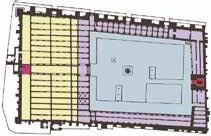
1. The mihrab is a niche that identifies the qibla or the wall that faces Mecca, marking the direction that Muslims must face during prayer. The Koran is often placed on a stand in this niche.
2. The minbar is a pulpit from where the imam delivers the sermons on Fridays. It consists of a staircase and a platform. According to tradition, this platform is reserved for God, which is why the imam stays on the step below it.
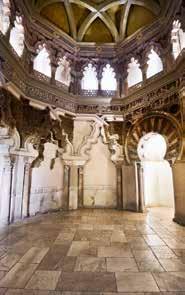
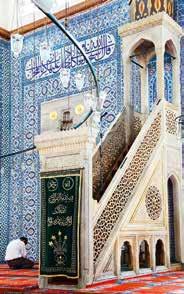
3. Interior of the prayer hall with galleries divided by pillars and arches.
Understanding art
4 Answer these questions about mosques:
a) What inspired their design?
b) Find the following elements in the courtyard and in the prayer hall and explain their use: the fountain, the qibla, the mihrab, the minaret.
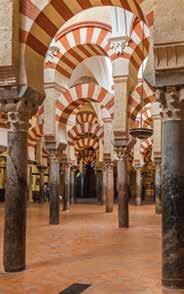

5 What contrasts are there between the exterior and the interior of Muslim buildings?
6 Why are there so few examples of sculptures and paintings in Muslim art?

1 Write a brief definition of the concepts represented in the following images.
4 The religion that Muhammad preached is based on five religious precepts. Explain them with the help of the following phrases:
‘There is no god but Allah and Muhammad is his prophet’.
‘Observe prayer because prayer will prohibit evil and vice’.
‘Take alms from their wealth to purify them and to enrich their souls’.
‘Whoever fasts in the month of Ramadan with faith and hope in God’s reward, will have his sins forgiven’. “Whoever performs pilgrimage correctly will be as if they were reborn”.
5 Copy the following terms and concepts in your notebook and find relationships between them:
Abbasid Caliphate
2 Explain who these figures are and say what historical fact or facts they stand out for.
3 Put these events in chronological order, then place them on a simple timeline: a) the conquest of Constantinople by the Turks; b) the conquests of Justinian; c) the foundation of Constantinople; d) the Muslim conquest of Syria, Palestine and Egypt; e) the Third Council of Toledo; f) the coronation of Charlemagne.

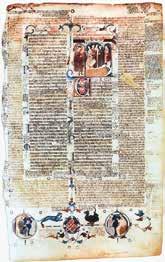
Conquest of Crete and Sicily
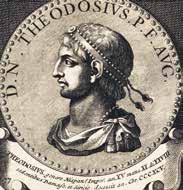
6 Look at this picture, then explain the characteristics of Byzantine architecture.



Reflect individually and share in a group the assessment of the activities involved. To do this, download the corresponding rubric at anayaeducacion.es
Carry out the competence self-assessment included at anayaeducacion.es
7 Identify and write in your notebook the names of the parts of the mosque indicated in the picture. A
C

Basic information
Name: Rufaida al-Aslamia
Year of birth: 7th century
Occupation: nurse
I am from Medina, one of the holy places of the Muslim world. Our prophet Muhammad fled from Mecca to my city in 622 and I had the honour of meeting him and teaching some of the skills required for caring for the sick.
Basic information
Name: Loujain Alhathloul
Date of birth: July 31, 1989

Nationality: Saudi
Occupation: activist Rufaida al-Aslaima was a renowned woman in her time, but not all Muslim women have been so lucky and in some Arab countries, equal rights between women and men remains a utopia. The fight to end gender differences in Saudi Arabia is long and difficult. After two years of negotiations, in 2008, the Ministry of Social Affairs in this country recognised the existence of the first association in favour of the fight for women’s rights, Ansar al-Marah.
Ten years later, in the summer of 2018, women could legally get behind the wheel of their own vehicle.
My interest in medicine came to me from the cradle, since my father, Saad al-Aslamy, was a doctor and I always tried to learn from him and care for sick people. Although I do not do surgery, I have managed to be considered the first nurse in my community.
The time that I live in is changing; thanks to the words of the Prophet, now the Arabs are abandoning false polytheistic beliefs and faith in Allah is spreading around the world from the Arabian Peninsula. However, the spread of Islam does not always take place in a peaceful manner, and
battles sometimes break out that cause deaths and injuries. I help by coordinating the work of the nurses and caring for Islamic soldiers in the field hospital. Sometimes we can only accompany them on their journey to the afterlife, but other times, thanks to medical experience and God’s help, we help them to recover. In periods of peace, my work is also important because there are many families who need medical and social assistance. In addition, I teach the basic notions of hygiene and nutrition to promote the health of all my neighbours.
Loujain was arrested for the first time in 2014 for driving from the United Arab Emirates to Saudi Arabia; a year later she ran for election, although her name did not appear on the ballot papers. In May 2018, she was taken back to prison for opposing the guardianship system; almost a year later, in March 2019, the first judicial hearing of this process took place, where the young woman reported having suffered sexual abuse, torture and

1 Locate Saudi Arabia on a map and point out its borders, find its capital and indicate where the city of Medina is.
2 Amnesty International is carrying out a campaign to collect signatures calling for the freedom of Loujain Alhathloul; imagine that you have to create a slogan, a poster or a campaign to support that goal. What would you do?
coercion during the interrogations to which she was subjected. Both she, like other companions of struggle, remain in prison. They are accused of promoting disorder and destabilising the Arab kingdom, but really their crime is to fight for a country in which men and women have the same rights. This situation is known in part because of Amnesty International’s efforts to get this young woman and other Saudi activists released.

My name is Dhuoda and I was born in the 9th century. I belonged to a noble family, so I received a good education. As tradition dictated, my marriage to the Duke of Septimania, a relative of Charlemagne, was soon arranged. After some years, my husband and children moved to the royal court while I remained in Uzès, in the south of France, where I have had to take care of our land and belongings. Because I want to transmit my knowledge to my children and, as they are in the court with their father, I have decided to write a treaty called “Liber manualis” so they can have access to it. In this manual, I show them how to live according to the values and rules of behaviour that all members of the nobility have to follow during their lives.
1 Read the text and answer the questions:
a) What social class did Dhuoda belong to?
b) What is the name of the treaty she wrote? Why did she write it?
2 Where did the nobility live in the early Middlle Ages? Where were these buildings located?
During the period of the early Middle Ages, the nobility lived in castles located in their manors. The main part of this building was the keep, which was divided into different floors where the family rooms were located. For a better understanding of the Early Middle Ages, you will learn about:

• Feudalism in Europe. Chronology, origin and expansion.
• Economy and feudal society.
• The nobility: lifestyle and residence.
• The clergy: religious activity. Regular clergy.
• The peasants: lifestyle and occupations.
• Romanesque art: architecture, sculpture and painting.
3 Browse the unit and find out about the lifestyle of people in feudal society. Then, talk about it with a partner.
The nobility used to live in manors.
Noble women used to have arranged marriages.
Yes, and castles used to have moats.

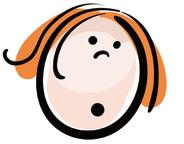



5.1 We will learn about the chronological development of the early Middle Ages to understand it.
5.2 Origin and development of feudalism.
5.3 Economy, society and religious development.

5.4 Culture and art.
6.1 Working in pairs, we will research key women from the study period, select one and make a class presentation and a small mural.
6.2 We will present the biographies we have created
But those who didn’t marry would enter a monastery.
WRITING
4 In medieval times, when the feudal lord had to go to war or to support their king, it was his wife who stayed in charge of the household and the castle. Imagine you are one of these women and write a letter to your younger sister, telling her about your daily life and what you do when your husband is away.
+ for guidelines, go to anayaeducacion.es
Feudalism was the political, economic and social system which characterised Western Europe between the 9th and 15th centuries. The system acquired its characteristic features during the Early Middle Ages; in other words, between the 9th and 11th centuries.
The most prominent features were the loss of political power of the kings, a primarily agrarian economy, a social organisation based on relationships of dependence between people and the enormous influence of the Christian religion.
Moreover, in its beginnings the feudal period is differentiated by its cultural and artistic impoverishment, until a common artistic style eventually emerged throughout Europe: Romanesque.
The origin of feudalism dates back to the 9th century, as a consequence of the instability and the moments of crisis and poverty that followed the death of Emperor Charlemagne in 814.
The reasons for this instability were the struggles between the Emperor’s successors, the Muslim attacks on the Christian Mediterranean coasts, especially in Italy and Sicily, and a second wave of
1 Which kingdoms existed in the 9th century in present-day Spain, France, Germany and Italy? Where were the Muslim territories located?

2 Look at the map of invasions in the 9th and 10th centuries and answer:

a) Which invaders threatened the security of Europe?
b) Which territories did each of them attack and how are these attacks represented on the map?
3 What relationship exists between feudalism and the instability of the time?
4 Who formed part of the Curia Regis and what was its function?
Faced with this situation, the kings, unable to protect their entire territory, sought protection from powerful local nobles who swore their loyalty and military allegiance in exchange for concessions.
Meanwhile, the peasants sought the protection of the nobles, in exchange for surrendering their land or their work.
All this led to the concentration of large expanses of land in the hands of the nobles, bishops and abbots, to whom a large body of men and women without property were subordinate.
Feudalism spread throughout the European territories located between the Atlantic coast and the Russian plains, and between the northern coasts of the continent and the Mediterranean Sea.
Feudal Europe was fragmented into numerous kingdoms and independent states, governed by kings who considered that their power came from God.
Therefore, their authority was, in theory, very broad: they led the army, legislated and judged. But in practice the king was merely the ‘first among equals,’ because the great nobles and clergy acted with a high degree of independence.
The kings governed with the help of the Curia Regis, an assembly of nobles and clergy who advised them on major issues.

In terms of administration, the kingdoms were divided into counties ruled by counts, and duchies governed by dukes.
The Vikings, whom their contemporaries called Normans, came from Scandinavia. From the mid-7th century until approximately 1 100, they sacked the European coasts in search of loot aboard their dragon ships with room for 50 people. Eventually, they settled down in a number of European territories. Other invaders were the Bulgarians and the Magyars, who came from western Asia and settled in Hungary. From there they would attack the territories of Western Europe.

When the kings had to make decisions on major issues, tthe members of the Curia Regis, an assembly made up of nobles, bishops and abbots, advised them.
5 Security, both public and private, is a wide professional field that includes various jobs (such as monitoring, citizen security, international security, cyber security, etc.). There is a large number of professionals that ensure our security. If you had to be an expert in the security field, where would you like to work? Research this profession and plan how you would get the position.
Medieval Europe was an agrarian world where wealth was based on land ownership. Fiefdoms or manors, large territories belonging to the king or granted by him to the nobility and the clergy in exchange for their services, were the centre of economic activity. Manors consisted of two parts: the demesne and the dependent holdings.

• The demesne was the territory exploited directly for the lord. It included his residence (castle or manor house), the best farmland, cultivated by serfs or free peasants, meadows with pasture for livestock, forests for hunting and gathering firewood and rivers for fishing and water supply.
• Dependent holdings were small plots of land granted or leased by the lord to the peasants. In return, they had to give him part of their harvest and work the land of the demesne a certain number of days per year: ploughing in spring, cutting the grass or harvesting in autumn. They also had to provide the lord with certain services: domestic work, construction, repairs, etc.
1 Define the terms: manor, demesne and dependent holding.
2 What do we mean when we say that the manor was selfsufficient?
3 Explain the reasoning behind these statements:
a) Agrarian production was low.
b) There was little trade.
c) Peasants had to pay taxes to the lord.
Manors were self-sufficient, which meant that all the agricultural tasks were carried out on them and all the necessary articles for everyday life were crafted there.

• Rudimentary tools were used to work the land, such as the hoe, sickle, scythe and the Roman plough pulled by oxen, which was not very heavy and hardly penetrated the ground. In order to maintain soil fertility, biennial crop rotation was practised: every year, half of the land was left fallow. As a consequence, crop yields were very low.
• Items necessary for daily life were crafted in the manor workshops: the forge, carpenter, cooperage, etc.

Certain facilities, such as the mill, winepress, oven and bridge, were owned by the landlord, who collected taxes from the peasants for their use.
As a result, there was little trade, which tended to be handled by a few itinerant merchants who travelled between the manors.
Provocative questions
4 With the help of the picture and the text, answer these questions:
a) Which parts of the manor can be seen?
b) What buildings and lands are included in each of these parts?
c) Which agricultural tasks are carried out? What tools are used to do them?
d) Which foods are obtained?
e) Which items are produced on the manor? Where are they made?
Feudal society was based on social structures, in other words, it was divided into orders, estates or social groups that were determined by birth, except in the case of the clergy. There were three estates, and each one performed a social function:
• The nobility fought and defended feudal society.
• The clergy prayed for the salvation of humanity.
• The commoners worked and carried out the necessary tasks to maintain and feed the other two groups. They were mostly free peasants or serfs who, along with craftsmen and merchants, constituted the bulk of the population.
The nobility and the clergy were the privileged estates, since they did not work, did not pay taxes, enjoyed special laws and held exclusive rights to certain positions. The commoners, on the other hand, lacked privileges.
In feudal times, people were bound together by relationships of personal dependence. These relationships, however, varied according to the estate to which they belonged.
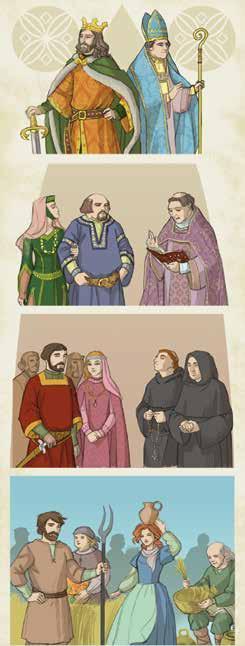
• The lord-vassal relationship, or vassalage, was established between a lord, who could be the king or a great nobleman or clergyman, and a vassal, generally another nobleman of lower rank. They were pacts of military allegiance in exchange for economic concessions. They took place in a solemn ceremony known as the commendation ceremony, which was attended by family and relatives. This ceremony consisted of two parts: the act of homage and the investiture.
In the act of homage, the vassal knelt before the lord and, he would place his hands into those of the lord and accept to be his vassal. He then swore an oath of fealty*, promising not to harm the lord and to give him military aid and advice.
In the investiture, the lord gave his new vassal a symbol of the benefit granted to him, such as a handful of earth, a rod, a ring or, in the case of bishops, a staff. In most cases, this benefit was a fiefdom: a large area of land that ensured the livelihood of the vassal and his right to govern it.
• Relationships of servitude were established between the peasants and the lords.
The lord gave the peasants protection, justice and permission to work the land. In return, the peasant was bound to work on the demesne, to give the lord a portion of his harvest and abide by seigniorial rights
… ‘Soldiers are those who protect our villages and our land, fighting with weapons against armies that approach us.’
… ‘Clerics are those who pray to God for us and promote Christianity among Christian peoples, serving God as spiritual work, they are dedicated only to this for the benefit of us all.’
… ‘Peasants are those who provide food, labourers and farmers are dedicated to this.’
The lord-vassal relationship regulated the obligations between the upper social groups, in other words, between the lord and his vassals. They were established by means of the commendation ceremony.
fealty: loyalty, especially to a king or a queen.
Relationships of servitude regulated the obligations between lords and peasants. The lord gave the peasants protection, justice and permission to work the land. In return, the peasant was bound to work the demesne, to give the lord part of his harvest and abide by seigniorial rights.
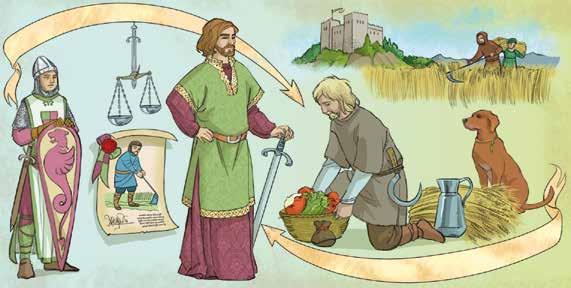
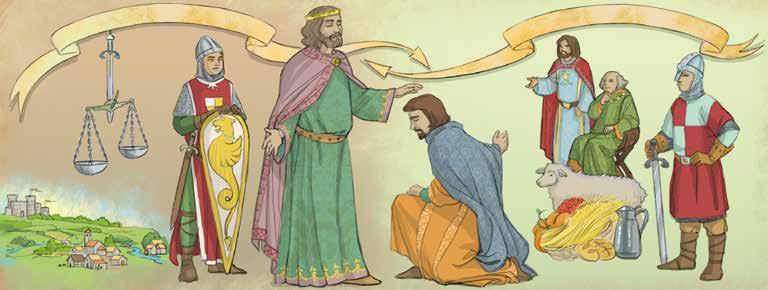
1 Create a social pyramid showing feudal society. It must include the members of each estate and the functions they carried out.
2 Write a sentence that includes all of these terms: estates, nobility, clergy, commoners, privileged, unprivileged, lord-vassal relationships and relationships of servitude.
Provocative questions
3 Look at the images and answer the questions:
a) Which moments in the commendation ceremony are represented?
b) What commitments were acquired in each one of them?
c) Who were the lords in the lord-vassal relationships? Who were the vassals?
d) Between whom were relationships of servitude established? What did each party commit to do?
Nobility was a social estate formed by a small number of people. It was divided into two groups, differentiated by their wealth and power:
• The higher nobility, composed of the direct vassals of the king, such as dukes, counts, marquises and barons.
• The lower nobility, composed of lesser nobles, such as knights or people who could own a horse and weapons of war.
The life of noblemen revolved around military activity, for which they were trained from a very early age. In times of war they lent military aid to the lord with their troops. In times of peace they practised horsemanship, hunting and combat in tournaments in order to prepare for war.
Noblewomen married the person designated by their parents. They owed complete obedience to their husband and they devoted themselves to managing the servants, raising the children, praying and embroidering. Those who remained unmarried would enter monasteries.
The nobility differentiated itself from the other social groups through their clothing, characterised by the quality and colour of the fabrics and the rich ornaments. Their diet included a greater amount of meat, seasoned with expensive spices (saffron, cinnamon, and pepper) and the preparation of foods with refined recipes.
Nobles lived in castles, where the local population also took refuge in cases of danger.
They tended to be located in the centre of the fiefdom, in an elevated area, and were protected by a moat and thick walls and towers. Inside the walls, the most important part was the tower of homage, which contained the chambers of the lord and his family, and the great hall or main room, where the lord held banquets, collected taxes and imparted justice. In addition, castles had a well, stables and workshops that produced the necessary items for everyday life.
1. Chemin de ronde or wall-walk. A walkway that runs along the battlements of the castle.
2. Arrow slit. A narrow opening in the wall of the barbican used for firing arms in the event of an attack.
3. Moat. Excavated land around the castle to prevent the approach of war machines.
4. Machicolation. A structure at the top of a tower or door used for defending against or attacking the enemy.
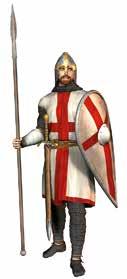
5. Drawbridge. A bridge used to cross the moat. It is so-called because it could be raised or lowered to isolate the castle.
6. Portcullis. Heavy metal grill lowered to prevent anyone from entering the castle.
7. Tower of homage. Residence of the lord and his family. It was divided into several floors containing the chambers of the lord and his family (A); the great hall or main room (B) with its walls covered in rich fabrics and tapestries; the chapel, the kitchen, the guardhouse (C) and the storerooms (D). These rooms were cold, dark and sparsely furnished.
Knights could keep a horse and own war weapons. A knight’s weapons were both defensive, such as the helmet, chain mail armour and the shield, and offensive, such as the sword, the lance, dagger, etc.
The ceremony was long and complicated. On the day of the ceremony the knight had to wash his whole body, pray, dress in white (as a symbol of purity), and cover himself with a red mantle in order to show that he was ready to spill his last drop of blood in the war. He also cut his hair as a symbol of servitude. He spent the night guarding his weapons. The next day, he was blessed by a priest, knelt before the lord or king and swore an oath of loyalty.
At the knight´s ceremony, the king or feudal lord would gird the knight’s armour and sword. Finally, the lord would dub him on the shoulder with a sword: this was called the accolade.

1 Explain the differences between the higher and lower nobility and between a battle and a tournament.
2 Look at the images and answer the questions: a) Which moment of the knighting ceremony is represented? b) Prepare a list of a knight’s offensive and defensive weapons. c) Write in your notebook the function of these parts of the castle: moat, tower of homage, workshops, portcullis and battlements.

3 Work in pairs and search for information on one of these two topics: a) Medieval tournaments; b) The life of a knight.


The clergy was not a homogeneous estate because great differences existed between the higher and lower clergy depending on their member’s place of residence.
• The higher clergy included the Pope, bishops and the abbots and abbesses of the great monasteries. They enjoyed sizable fiefdoms and revenues. The lower clergy included priests and the monks and nuns of the monasteries, who lived in poverty.

• The secular clergy, who lived amongst the laypeople, and consisted of bishops and priests, were distinguished by where they lived. The regular clergy, who lived in a monastic community, consisted of abbots and monks or abbesses and nuns.
Feudal society was deeply religious. The Church preached Christian doctrine and administered the sacraments, but was also influential in other areas of life beyond religious affairs.
• Politically, the Church intervened in the affairs of the Christian kingdoms, counselled the kings and arbitrated in their disputes.
It also curbed violence through the ‘Peace of God’, which forbade attacking defenceless people or places, and the ‘Truce of God,’ which prohibited waging war on Sundays, holidays and certain times of the year.
• Economically, the Church was a privileged estate which did not pay taxes, possessed sizable fiefdoms* and received donations. It was also entitled to the tithe, or one-tenth of all harvests.
• Socially, it controlled the behaviour of the people and the fulfilment of religious obligations. It also attended to the poor and the sick, it gathered the orphans, it sheltered the persecuted and it provided accommodation to pilgrims. The bells of the churches and monasteries even regulated working and resting hours and were the most common reference for measuring time.
• Culturally, the Church organised education and financed numerous works of art.
In the Early Middle Ages, the Church had great prestige. For that reason, it was present at the most important moments in people’s lives: at birth, through the sacrament of baptism; at weddings, through the marriage ceremony, and at death, through the funeral rites
1 Classify the following members of the clergy according to their wealth and the place they lived: priest, nun, bishop, abbess.
2 Prepare an outline on the activities of the Church.
Provocative questions
3 Look at the images and answer these questions:
a) What activities did monks carry out in monasteries?
b) What did their habits look like?
c) Which parts of the monastery were dedicated to prayer, and which were for the exclusive use of the monks? What was each one used for?
d) Which areas of the monastery were used for economic, social and cultural activities?

Monastic life was very important in the Middle Ages. Monasteries were built in the countryside and had different parts for each function: a church for praying and cells for the monks. They also had spaces for a variety of activities: economic, such as the vegetable patch, winepress, stable, forge and carpentry workshop; social, such as the hospice and the infirmary; and cultural, such as the school, library and scriptorium or writing room, a place where very old codices or books illustrated with miniatures were copied by hand. Monks obeyed the rule or law which regulated each order and wore its habit. In the Early Middle Ages, the most important order was the Order of St. Benedict, or the Benedictines, founded in the 6th century by St. Benedict of Nursia.
The Benedictines wore black habits and took vows of poverty, obedience and celibacy. They were governed by the principle of ‘ora et labora’ (pray and work), which combines prayer with manual labour. They ate an austere diet of soup, bread, vegetables, eggs, fruit, wine and beer; meat and fish were eaten only on exceptional occasions.
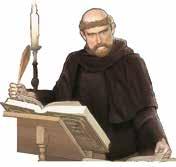
Their habit was a black tunic fastened with a belt, a scapular, which hung over the chest and back, a coat or cowl with a hood and wide sleeves, stockings and shoes.

Peasants in fiefdoms constituted the majority of the third estate. There were two types of commoners:
• Villeins were free people who could live where they wanted and even leave the fiefdom.
• Serfs were people who could not leave the dependent holding, which they farmed and were tied to. They transmitted their condition to their children by inheritance. They did, however, have some personal property and the lord, who owed them protection and justice, could not beat them, kill them or sell them as slaves.
Agricultural tasks and other complementary activities were carried out with the participation of the entire peasant family.
• The men performed the heavier agricultural tasks, such as ploughing, reaping or cutting down trees. Some of them also practised certain trades, such as carpenters, brick masons, bakers and blacksmiths.

• The women helped in agricultural tasks, such as planting and harvesting crops and grapes. They performed domestic chores and took care of the children, they spun and they wove. Some also worked as maids, washerwomen or day labourers.

• Children took care of the easier chores. At the age of four, they would begin to help with the household chores, looking for firewood or taking care of the domestic animals. At age 14, having reached the age of majority, they began to do agricultural work.
The daily life of peasants was very hard. They worked from dawn to dusk with primitive tools that provided low yields. In addition, they had to pay taxes to their feudal lord for working the land and for using certain facilities of the fiefdom, such as the mill, the oven and the press. They worked for free on the demesne and in the lord’s house, and had to pay a tithe to the Church: one-tenth of their harvests and livestock.
Clothing was normally produced by the peasant women using coarsely woven and undyed brownish coloured wool. Each person had one garment which was worn throughout the year. Their diet was scarce and monotonous. 70 % consisted of poor grain bread, such as rye, millet or oats, complemented with vegetable stews, vegetables, milk and eggs. Meat was eaten only on rare occasions such as Christmas and certain holidays. It consisted of poultry and pig from the slaughtering which took place in November or December.
Both
or
Hygiene was poor and people only washed the visible parts of the body: their hands and face.
With these scarce hygienic conditions the spread of lice, fleas, and bedbugs was very common. A common remedy used to get rid of these pests was to put the infested person inside a barrel, it was thought that the lack of light and air killed the bugs.
Villages were inhabited by people who were dependents of the same feudal lord. They were built on land cleared in the forest by the peasants. To do so, once the location had been chosen, the trees were burnt, the burnt logs were cut down, the fields were ploughed and the houses were built. The surroundings of the village provided certain resources. The forest provided pasture for the livestock, small game, wood to build houses, firewood for cooking and fruit to round out the meagre diet. Marshes and rivers offered reeds, rushes and fish. The houses of the villages were very modest. Walls were built with local materials, (wood, clay or stone). Roofs were made of straw and floors of rammed earth. They had one or two rooms, often without windows, and little furniture: a bench, several straw beds, a few clay cooking pots, and wooden bowls and jugs.
Working with concepts
1 Define these concepts: villein, serf and tithe
Assessing historical developments
2 Why was the life of a peasant so hard? What differences can you see when comparing it to the life of present-day farmers?
Handling images
Associative analysis
3 Using the illustration and the text, explain how a peasant village looked like, which tasks they did and what tools they used.
4 Describe what the houses were like: materials, distribution and furniture



Romanesque Art, which developed between the 11th and the middle of the 12th century, was the first medieval style that acquired common features throughout Europe. Its name comes from the shape of its distinctive arch reminiscent of the arch used by the Romans.
The Benedictine Order contributed to its diffusion, because it adopted this style in its motherhouse in Cluny (France), and from there it was disseminated by the other monasteries founded in Europe, the Crusades, and the pilgrimages to the Holy Places. The existence of master stonemasons also contributed to its dissemination, because they supervised crews of bricklayers, carpenters and sculptors as they travelled throughout Europe offering their technical expertise.
Architectural elements
Romanesque architecture used stone as its primary material, interior supports with cruciform columns and pillars, semicircular arches, and barrel vaulted ceilings, obtained by a succession semicircular arches, or groin vaults, formed by the intersection of two barrel vaults. These stone vaults are very heavy. This is why the interior is reinforced with transverse arches which transfer the weight of the vault to the supports. On the outside, the building is supported by buttresses to prevent the walls from collapsing under the weight. The buildings also have thick walls and few windows, and therefore, the inside is dark.
On the outside, the wall is decorated with vertical strips that protrude from it, with galleries of small blind arches and different types of mouldings.
The church was the key building. It usually had a Latin cross plan consisting of one, three or five naves separated by series of arches, a transept or transverse nave with a dome or tower in the centre, and a sanctuary formed by several semicircular apses. Pilgrimage churches also had an ambulatory or semicircular nave that surrounded the main altar and allowed pilgrims to cross the church without interrupting worship and a gallery or second floor over the aisle to accommodate more of the faithful.
Important Romanesque churches include those of Saint Foy of Conques, the Basilica Church of St. Mary Magdalene of Vézelay and the Abbey of Saint-Pierre de Moissac in France; the Cathedral of Durham in the United Kingdom; the Cathedral of Worms in Germany and the Piazza dei Miracoli in Pisa, Italy.
Other types of Romanesque buildings were monasteries, castles and walls.
In Early medieval times, monasteries were really important as they were in charge of keeping the cultural legacy of older times. To do so, they made manuscript copies of books and documents, some of them of great beauty. By solving different clues, you will find out the title and author of a novel that is set in a medieval monastery.



1 Explain the reasoning behind these statements:
a) Romanesque is considered the first international European style; b) Romanesque churches have thick walls and are dark;

c) Pilgrimage churches had an ambulatory and gallery.
2 Describe the plan of the Romanesque church. Focus your attention on its shape and the characteristics of its naves and sanctuary.
3 What types of vaults were used in the Romanesque style? Explain the differences between them. Indicate what type of vault is seen in the photo of Saint Faith of Conques.
4 Look for images of interiors and exteriors of a Romanesque church. Then, explain the characteristics of the Romanesque architecture that you see.
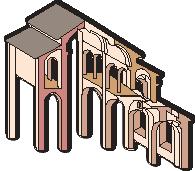
Romanesque sculptures and paintings were primarily made for churches. Their function was to teach Christian doctrine to the mostly illiterate people through images.
This function explains why the figures sought neither beauty nor realism, but rather expressivity or clear communication of the message that they wanted to transmit. As this message is eternal and timeless, the figures are rigid, elongated, impassive and, somehow, unnatural.

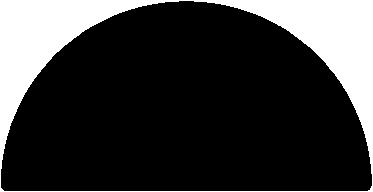

The main themes are scenes from the Old Testament and the life of Christ, legends of the saints, virtues and sins. Themes related to the end of the world were also frequently represented; amongst these are the Final Judgment presided over by the Pantocrator or God Almighty.
Relief sculpture, made in stone, was applied to buildings like churches, where it was placed on entrance portals and interior capitals, and cloisters. In all cases, the representations follow the ‘law of the frame,’ that is, the figures adapt their shape to their enclosing frame and they tend to fill up all the space. Free-standing sculpture was made out of polychrome wood or ivory and its themes were limited. The crucified Christ is nailed to the cross with four nails. He wears the crown of a king, a long robe and expresses neither suffering nor pain. The Virgin Mary is represented as the throne of God, seated, holding the Child on her knees without expressing a maternal relationship with him.
Painting was produced in frescos on the inner walls of the churches or on panels covered with a layer of plaster and placed in front of the altar (altar frontals). Miniatures, which illustrated books, also achieved great advancement. The style is characterised by linear painting, in which heavy black lines prevail, by the use of flat and uniform colours, with a predominance of blue and red, and by the lack of interest in representing the volume of figures or depth of space.
The tympanum is decorated with sculptures depicting the Final Judgement. In the central and upper parts, the Almighty is seated with the angels. To his right is Paradise, where those who have been saved enter Heaven led by the Virgin Mary, followed by St. Peter. To his left is Hell with the condemned and the devil.
1 Define the following terms: free-standing sculpture, the law of the frame, Pantocrator.
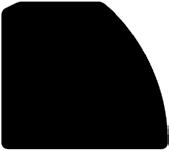
2 Explain why Romanesque sculptures and paintings are expressionless, rigid and impassive.
3 Select a Romanesque sculpture and a painting and write a commentary about them. It must include, at least, these aspects: location, material, style features and the theme depicted.
Go to the analysing works of art (II) and (III). Painting and sculpture

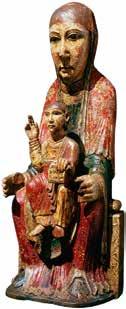


1 Briefly explain the structure of a fiefdom. The image below may be of help to you.

3 Write a text consisting of ten lines that comments on the information presented in this image.



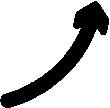
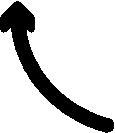


4 Compare the everyday life of the nobility and the peasantry.
5 Write down in your notebook some of the consequences of the use of stone in Romanesque vaults.

2 Answer these questions:
a) What did vassalage relationships consist of?
b) Between who were they carried out? What did each party agree to do?
c) What other personal relationships were conducted in the feudal era?

We will continue with our study of the High Middle Ages anWd the beginning of feudalism. Reflect individually and share in a group the assessment of the activities involved. To do this, download the corresponding rubric at anayaeducacion.es
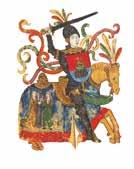
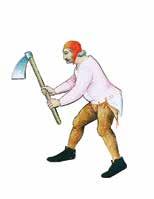
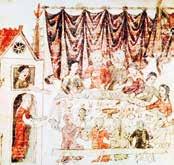
Carry out the competence self-assessment included at anayaeducacion.es


Name: Gudrid Thorbjarnardóttir
Period: 980-1050

Nationality: Icelandic
Occupation: Explorer, navigator and farmer
I only have a few years left to live, but since my retirement in Iceland I have been remembering important moments in my life. I feel, as if I was living it again, the cold wind on my adolescent face when I travelled with my family from Iceland to Greenland. I also remember the feelings of nerves, the frustrated hopes and
Basic information
Name: Ann Bancroft
Epoch: 1955
Nationality: American
Occupation: Explorer, writer, and teacher
A little over nine hundred years separate Gudrid’s arrival in Vinland with the birth of Ann Bancroft. Those American lands to which the Vikings arrived today coincide with the Canadian territory off the coast of New Brunswick, Nova Scotia and the island of Newfoundland.
Ann Bancroft is from Minnesota, but she knows some of the major Viking settlements well, as she was the first woman to ski in Greenland and the first to reach the North Pole on foot, after 56 days of travel, in 1986.
the loss of my husband, Thorir, in my first shipwreck. Thinking back to those years, I believe a desire to explore and discover lands and to found Viking settlements was forged in me. With my second husband, Thorsteinn, the youngest son of Erik the Red, I shared an adventurous spirit and a desire to reach the lands on the other side of the ocean. The goal was to get to Vinland. We decided to travel in the summer, but even at that time the force of the winds, the fogs and the storms pushed us away from our destination and an epidemic wiped out almost the entire crew, including my husband.
Perhaps I should have settled with my third partner, Karlsefni, in some fertile part of Scandinavia, but

around the year 1010, I managed to finally step foot on that territory on the other side of the ocean. It was a place of forests, green meadows, and rivers teeming with salmon. There my son Snorri was born, the first Scandinavian of that prosperous and distant place inhabited by strong and warrior peoples like ours. After three years we returned to Iceland where, after being widowed again, I ran the family farm until I started a very different journey, a pilgrimage to Rome and then back to my native Iceland, where I now live as a hermit.
Like Gudrid, Ann is a tireless explorer, and her early conquests did not quell her desire for new challenges, she still had another pole to reach. In 1993 she led an expedition of four women to reach the southern tip of our planet. In those latitudes, in Antarctica, she skied with Liv Arnesen, with whom she would later found “Bancroft Arnesen Explore” and with whom years later, in 2007, she would participate in a tough incursion through the Arctic Ocean in order to study the environmental deterioration of this highly sensitive
1 The discovery of America is taken as the starting point of the Modern Age, however, there were Europeans in America long before this celebrated date. How many years of difference are there approximately? What route would Gudrid and her companions take to make the journey? What other historical fact is taken as the beginning of the Modern Age?
2 Ann Bancroft has shared different projects with Liv Arnessen. Find information about this woman and write a short biographical note.
ecosystem. She also chairs a foundation that bears her name, the Ann Bancroft Foundation, to encourage women to develop their dreams and projects.
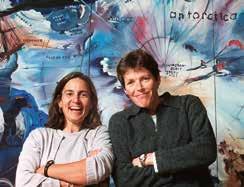
© GRUPO ANAYA, S.A., 2023 - C/ Valentín Beato, 21 - 28037 Madrid.